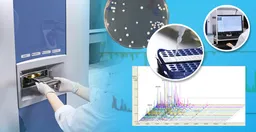

NITE Develops World’s First Next-Generation Microbe Identification Software
Introduction
The National Institute of Technology and Evaluation (NITE) has recently introduced the world’s first next-generation microbial identification software, which promises rapid identification of approximately 85,000 prokaryotic microorganisms. This innovation is a collaborative effort involving Shimadzu Corporation and the National Institute of Advanced Industrial Science and Technology (AIST). Released on May 20, the software utilizes a protein theoretical mass database based on genomic information to advance the field of microbe research and identification.
Background of Development
Rapid identification of microorganisms is crucial in diverse fields such as healthcare, quality control in products, and bioproduct research and development. Among the technologies available, MALDI-TOF MS (Matrix-Assisted Laser Desorption/Ionization Time-of-Flight Mass Spectrometry) has gained significant traction due to its speed and ease of use, making it popular in both clinical settings and industrial processes. However, existing systems using MALDI-TOF MS have encountered several challenges. For instance, variations in cultivation conditions can affect identification outcomes, and the range of microbes that can be identified is limited, often leaving key industrial microbes unrecognized. Furthermore, many existing identification systems are tied to specific manufacturers or models of MALDI-TOF MS, complicating broader applicability.
Development of MALDI-TOF MS Microbial Identification Software
Through collaborative research, Shimadzu Corporation, AIST, and NITE have developed and commercialized this next-generation software, branded as "MicrobialTrack". The software employs a database known as GPMsDB, which computes the theoretical mass of proteins generated by microorganisms based on genetic information. This innovative approach enables the identification of not only cultured microorganisms but also unculturable and difficult-to-culture varieties, covering a comprehensive spectrum of 85,000 prokaryotic species. With MicrobialTrack, users are no longer dependent on the specific model or manufacturer of the MALDI-TOF MS system employed, thus simplifying the identification process across various applications. Additionally, the software can generate protein information that underpins microbial identification, enhancing data utility and support.
Expected Benefits
The advent of this microbial identification software heralds a new era of rapid and straightforward identification for a broader range of microorganisms. Enhanced accuracy in identifying contamination microbes in food and pharmaceuticals will lead to significant risk reduction and improved safety measures. Moreover, given the extensive range of microorganisms covered by this software, including uncultured and difficult-to-culture ones, it opens up new avenues for basic research across sectors such as biotechnology, healthcare, agriculture, and environmental science. This capability could accelerate the discovery and utilization of new microbes, paving the way for innovative industries.
About NITE (National Institute of Technology and Evaluation)
Operating under the Ministry of Economy, Trade and Industry, NITE serves as a regulatory body that supports the production and safety of industrial goods through a myriad of technical services. One of its key divisions, the Biotechnology Center (NBRC), is one of the largest microbial preservation establishments globally, housing over 97,000 strains. NBRC provides comprehensive support related to microbial data, technological assistance, and regulatory compliance, significantly contributing to the growth of the biotechnology industry.
Video Presentation
NITE has released a branding video that encapsulates its vision, "Creating a better future with microorganisms." This visual representation aims to promote the significance of microbial science and NITE’s commitment to advancing research in this field. It is recommended to view this insightful video.
Related Web Resources
- - Shimadzu Press Release
- - Microbial Data from AIST
- - Shimadzu Journal Vol.80[3・4 on Diagnostics](https://www.shimadzu.co.jp/products/tec_news/srv80_34/report01.html)


Topics Consumer Technology)










【About Using Articles】
You can freely use the title and article content by linking to the page where the article is posted.
※ Images cannot be used.
【About Links】
Links are free to use.